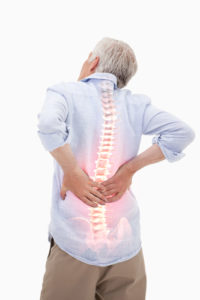 “Most of the neuromuscular dysfunction we are trying to correct in consultation is not the result of some lesion or aberrant function inherent to the muscle under consideration. The real problem is that the central nervous system has come to a bad solution based on the proprioceptive information it has received. If we can find a way to demonstrate to the central nervous system the nature of its error, the central nervous system will instantly modify the neuromuscular responses. This is the beauty of P-DTR.” — Jose Palomar
“Most of the neuromuscular dysfunction we are trying to correct in consultation is not the result of some lesion or aberrant function inherent to the muscle under consideration. The real problem is that the central nervous system has come to a bad solution based on the proprioceptive information it has received. If we can find a way to demonstrate to the central nervous system the nature of its error, the central nervous system will instantly modify the neuromuscular responses. This is the beauty of P-DTR.” — Jose Palomar
The creator of Proprioceptive – Deep Tendon Reflex Therapy (P- DTR) wrote this back in 2011 in order to show how P-DTR was going to be a way for therapists and healers to communicate with their patient’s bodies. The question now becomes, how has P-DTR helped in managing the pain that has developed in people’s bodies. Keep reading to find out the answer to that question.
Wait, what is Proprioceptive – Deep Tendon Reflex Therapy (P-DTR)?
Let’s quickly define P-DTR before we get into how it can help with pain management. P-DTR is a method of neurological screening and treatment which offers an extraordinary ability to isolate and treat specific dysfunctional components of your nervous system. This ability is so valuable in the search for chronic pain resolution as it can help us understand why certain interventions simply do not help for any length of time.
P-DTR, Pain & Pain Management
At Pain and Performance Solutions we’ll be able to pinpoint the specific part of the nervous system that is sending inaccurate information to the brain. We’ll gather this data with a thorough history of your health and old injuries coupled with your lifestyle habits. Your injuries are prolonged due to your everyday life. We usually force ourselves to work through an injury without proper treatment. Your nervous system responds to this by sending messages to the brain. The ‘threat’ signals lead to your brain creating irrational responses. These responses happen when your body tries to redistribute its body weight away from the main location of your injury. This can create a postural imbalance due to your mind trying to overcompensate for the affected area. Thus, leading to lingering pain.
When it comes to our body’s injuries, the healing process is completely unique to you. We need to understand the role of stress, sleep, nutrition, hydration, emotions, environmental stressors and more. Proper treatment of pain does not end at bones, muscles and joints.
Like we said, our body and our brains will respond in their own way, on their own time when it comes to your injuries, but the primary goal is to create a coping strategy. This strategy is a way to avoid exposing itself to an apparent threat. The strategies your body creates to cope with what your body is trying to avoid, is what P-DTR is allowing us to understand. Once we gather this information with complete accuracy, and determine what needs to be corrected, we’ll be able to treat your injuries efficiently.
How We Can Help With Pain Management
The purpose of this treatment is to get your body working in complete congruence with the rest of your body while not overcompensating for past injuries. We can’t agree with the PDTRUSA.com website any more strongly when they say, “By truly grasping the practical application of neurology, we can easily make sense of the complexities of pain science. Ultimately, pain is a not an input to the body, but rather a conclusion by the brain. Change the input. Change the conclusion.” We are just a phone call or email away from helping you with your pain management with Proprioceptive – Deep Tendon Reflex Therapy.